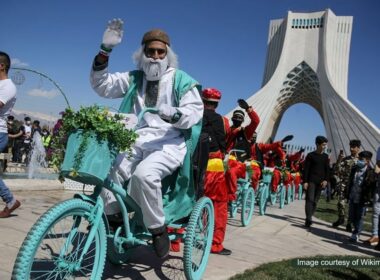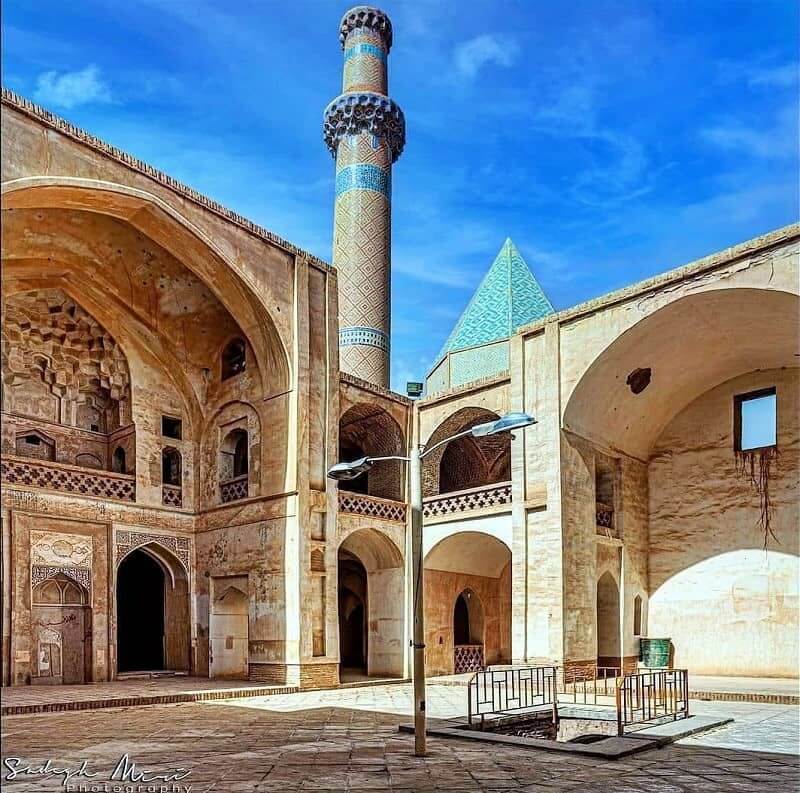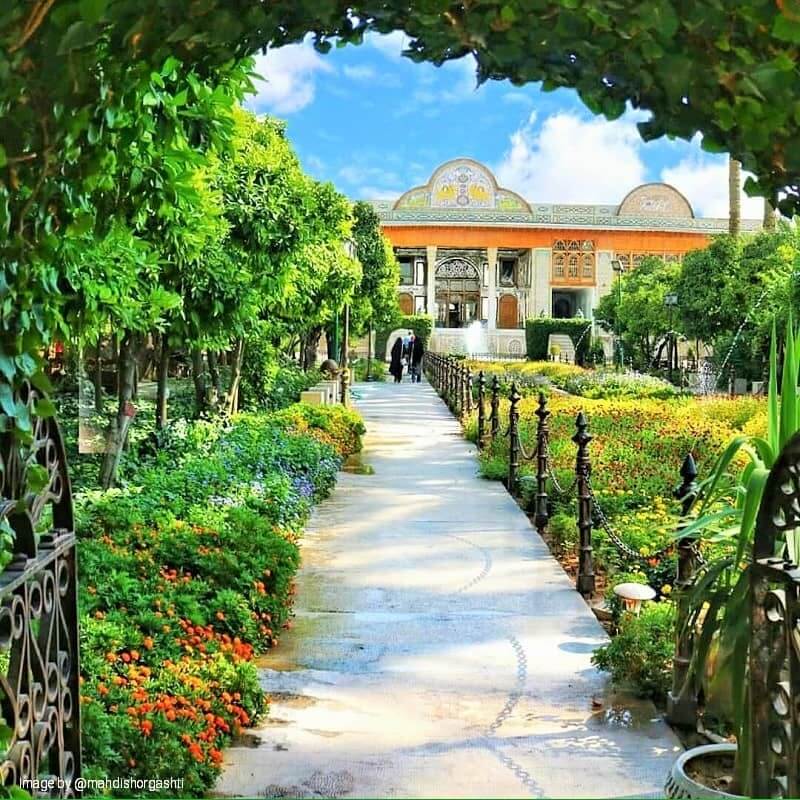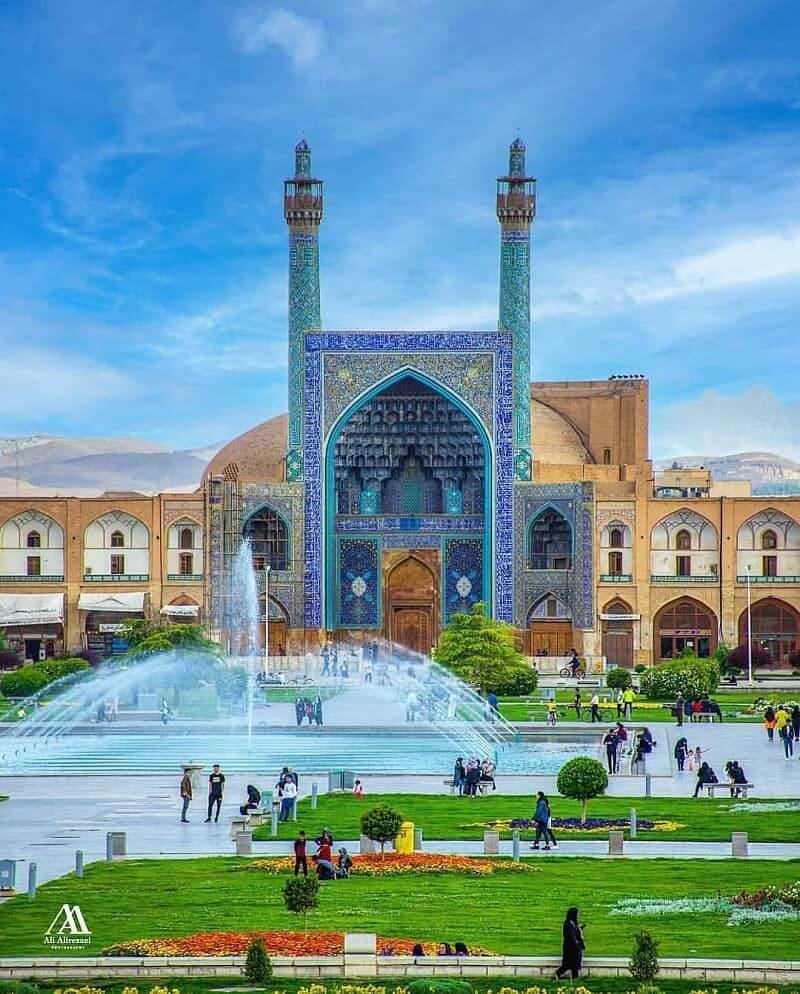
Isfahan is located between the desert and the mountains. This beautiful city is one of the prominent cities in the country and has numerous historical monuments and architectural masterpieces. All these works are considered unique examples of art and architecture. A fine example of these monuments is the Abbasi Great Mosque of Isfahan (Imam Khomeini Mosque) located in Naqsh-e Jahan Square (Imam Khomeini Square).
The History of the Abbasi Great Mosque in Isfahan
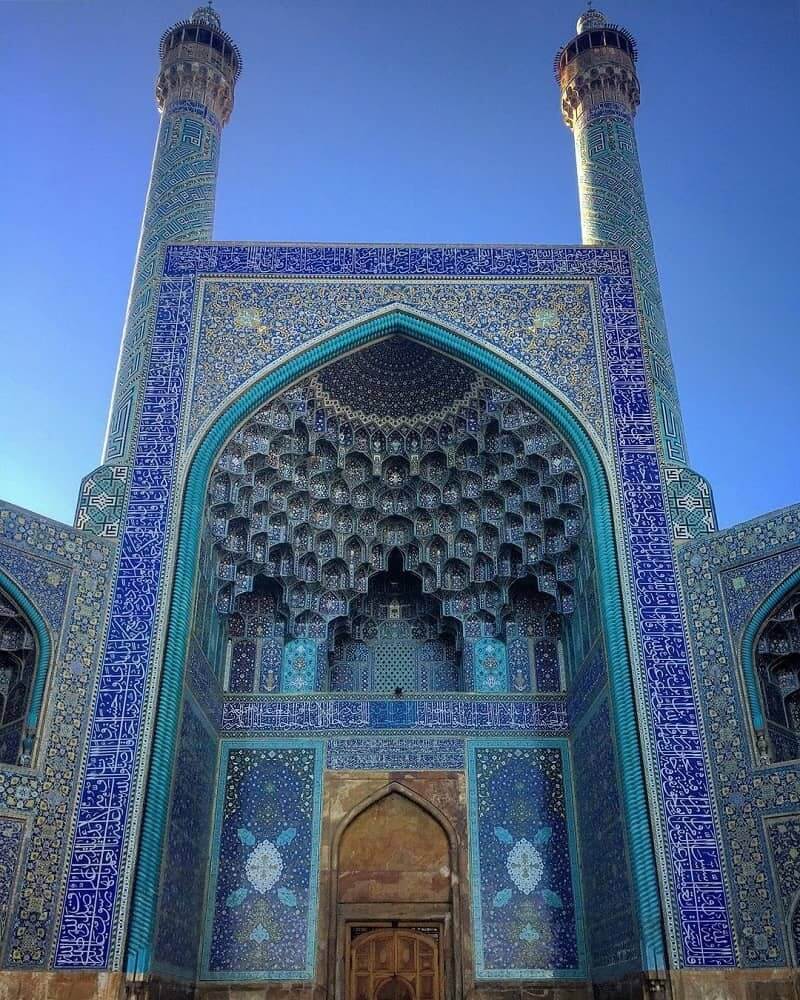
This mosque is also known as the Shah Mosque, the new Sultani Mosque and the Abbasi Great Mosque. This mosque dates back to the era of Shah Abbas I, the Safavid king. It seems that this is the reason why it was named Jame Abbasi Mosque.
This Mosque was built by the order of Shah Abbas, at his own cost and with his resources. He has dedicated the Savab (religious benefit) of constructing the mosque to his ancestor Shah Tahmasp I. The construction of this mosque began between 1588 to 1629 AD and was completed between 1629 to 1642 AD by other the Safavid kings. This building was registered as an Iranian national heritage on January 6, 1932.
Features of Imam Khomeini Mosque in Isfahan
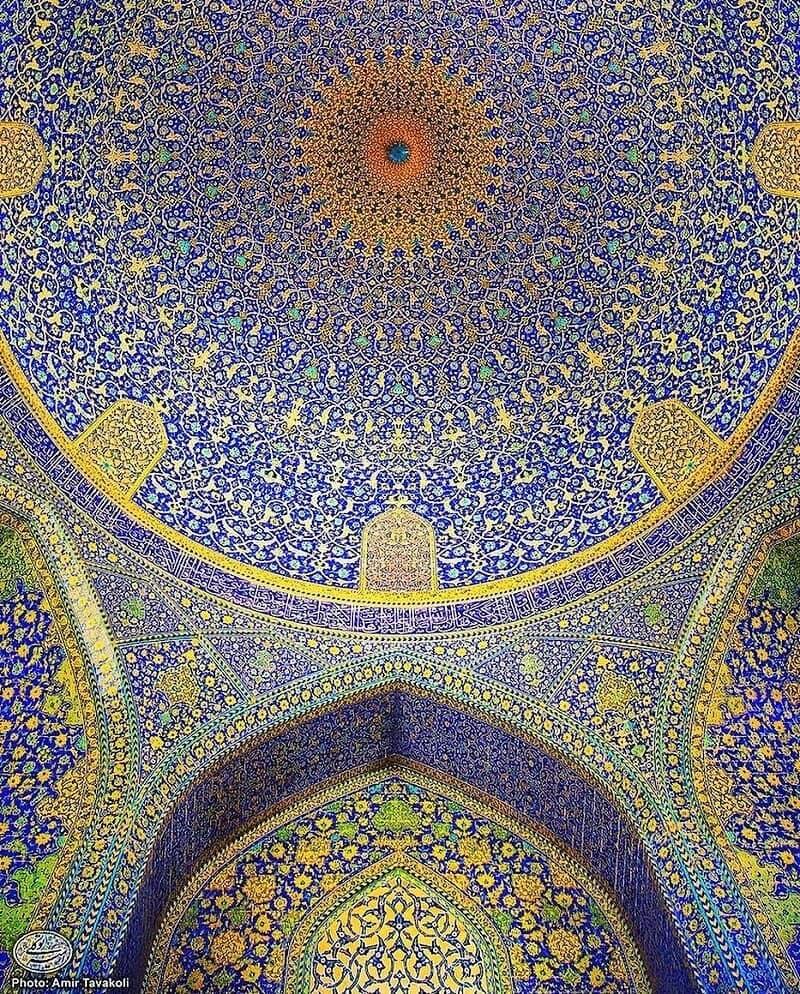
The numerous features of the mosque have made it one of the most famous mosques in the world. Its most notable features are:
- Architecture, Tilework and Woodworking: Imam Khomeini Mosque was listed on the UNESCO World Heritage List because of the implementation of these features in its design in the 17th century.
- Mosque Entrance or Pishgah: There are inscriptions of various poems installed on the entrance of the Imam Khomeini Mosque in Isfahan. There are also gold and silver coated Nastaliq style poems carved on the main gate. To be precise, sixteen verses of poetry are written on the main gate, eight hemistiches are on one leaf and the other eight verses on the second lintel.
- Decorations such as Haft-Rang or Seven Colored Tiles: The mosque facade is covered with seven-colored tiles, the main colors are blue and gold.
- Mihrab or Jolokhan of the Mosque (wall niche): Although the direction of the Qibla is from northeast to southwest, the dome of this mosque containing the mihrab is facing north. The mihrab design had certain issues that were fixed later on. The Qibla direction in this mihrab is only 7 degrees off from the Qibla. This is an achievement in itself, since it was built according to the calculations made by Sheikh Baha’i with the limited tools available at the time.
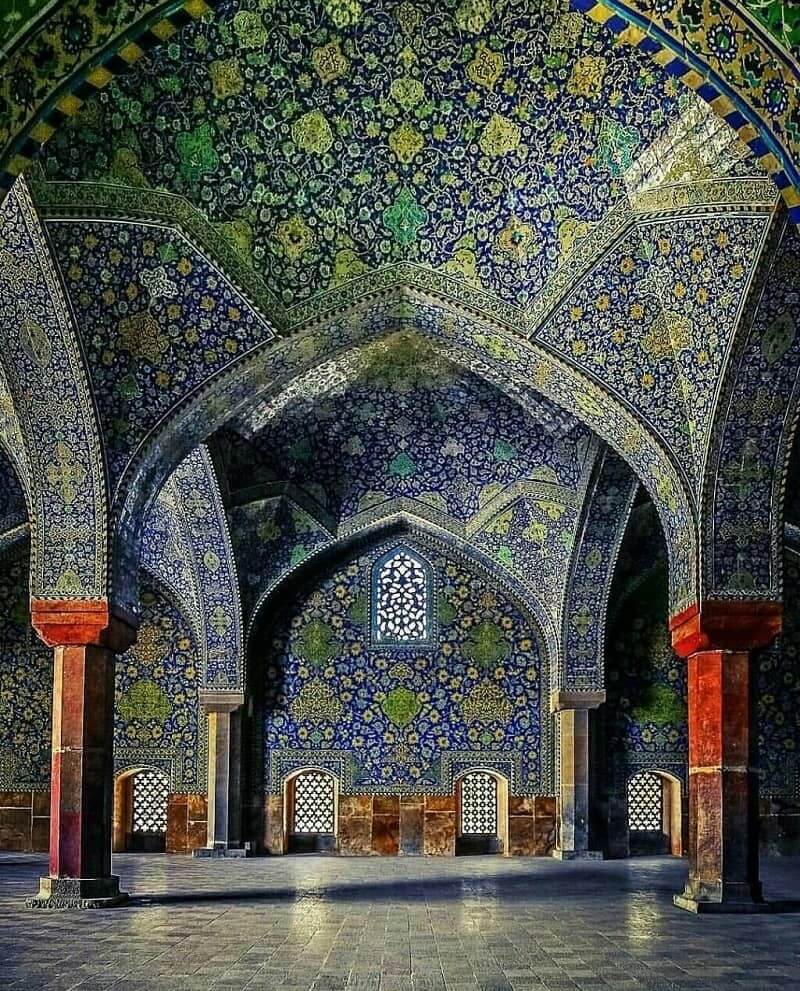
- Mosque Shabestan (nave): There are two Shabestans, symmetrically located on the east and west sides of the mosque. The Shabestan on the eastern wing is larger, but with fewer decorations. The Shabestan on the west wing is smaller, but decorations such as seven-colored tiles make it a sight worth seeing.
- The domes of the mosque and the Shabestans: the height of the large mosque dome is about 52 meters, measuring from the peak to the domed-chamber floor with a diameter of 23.5 meters. Also, the peak of this dome is the highest point in the entire complex.
- Paintings and wall decorations: The patterns of flowers and bushes on the interior walls of the Imam Khomeini Mosque have made it stunning. The Imam Khomeini Mosque in Isfahan is a prominent architectural monument, showcased through the detailed painting by “Pascal Coste”, famous French architect and orientalist. The painting was drawn in 1840 AD.
- Esper (Entablature) or the space between the entrance and the roof: There are entablatures on both sides of the mosque entrance, each decorated with 4 inscriptions. The writings are in black on a turquoise-colored background.
Sangabs of Imam Khomeini Mosque in Isfahan
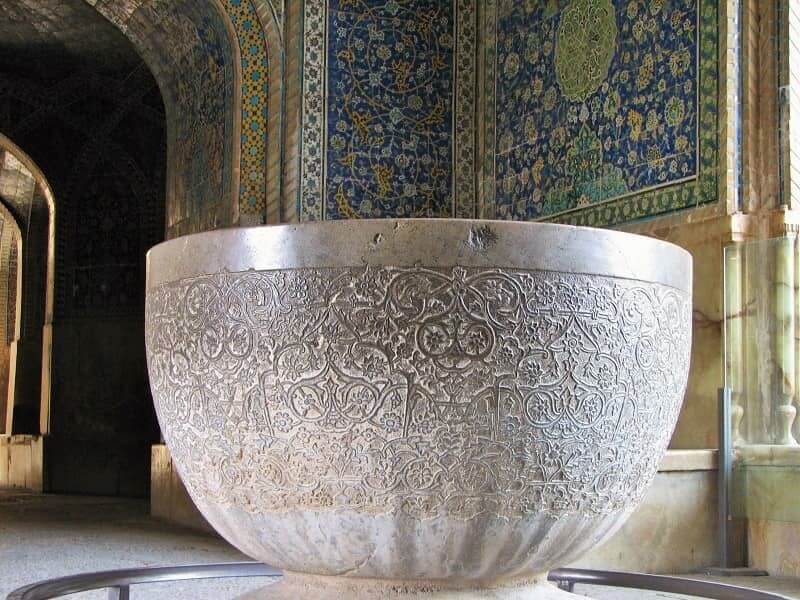
There are seven sangabs (stone vessels) in different locations throughout the Imam Khomeini Mosque of Isfahan. There is a Sangab inside the vestibule past the entrance of the mosque made of jasper stone, which is placed on an octagonal stand. This sangab is covered with reliefs of flowers and bushes and is installed near the main entrance of the mosque.
In addition, there are sangabs in the west wing. One of them is the Chehel Sotoon (with forty columns, unrelated to another Isfahan monument by the same name) Sangab in the western wing. It is made of limestone, covered with relief patterns of flowers and bushes. This sangab has an octagonal stand and is placed between two square fountains. The name of the other sangab is the Western Dome Sangab. It is made of marble stone and is placed on a square stand.
West wing sangabs are made of soft stones. So, you can easily spot and see the beautiful poems engraved on them in Nastaliq script. The poems are verses that describe Imam Ali (AS).
The sangabs of the eastern wing are similar to the western sangabs, and are placed symmetrically. There are other sangabs in the southwest and the east end of the main entrance of Imam Khomeini Mosque of Isfahan.
The southwest sangab is located in the corridor overlooking the courtyard on the southwest corner. The date 1901 of the lunar hijri calendar is engraved on this stone by mistake. It should be 1091 (1680 AD) which was during the reign of Shah Ismail Safavi.
Do Not Miss Visiting This Attraction
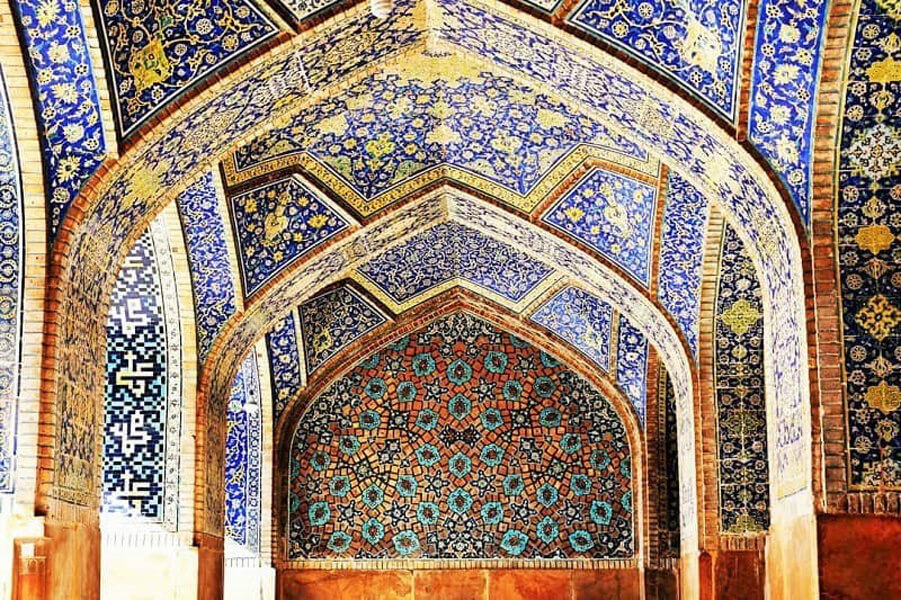
Imam Khomeini Mosque of Isfahan is an elegant mosque with unique features. If you are planning to travel to this city personally or on an Iran tour package, include this mosque in your sightseeing schedules. Visiting this beautiful building and other tourist attractions of Isfahan serves as an introduction to historical architectural styles used in the construction of buildings.
Where is Imam Khomeini Mosque of Isfahan?
This mosque is located on the southern wing of Naqsh-e Jahan square in Isfahan. You can see the exact location of this mosque below:
Frequently Asked Questions about Imam Khomeini Mosque in Isfahan
If you did not find the answer to your question here, ask us in the comment section below and explain your question. We will answer it as soon as we can.
What are the other names of Imam Khomeini Mosque in Isfahan?
Imam Khomeini Mosque, located in Naqshe Jahan Square in Isfahan, is also known as “Shah Mosque”, “New Sultani Mosque” and “Abbasi Great Mosque”.
When was Imam Khomeini Mosque of Isfahan built and who ordered its construction?
Shah Abbas I ordered the construction of the Abbasi Great Mosque or Imam Khomeini Mosque of Isfahan, which is why one of the names of this mosque is the Abbasi Mosque. The construction of Imam Khomeini Mosque of Isfahan started between 1588 to 1629 AD and was completed between 1629 to 1642 AD under the reign of another Safavid king.
What aspect of Imam Khomeini Mosque of Isfahan is the focus of Pascal Coste’s painting?
Pascal Coste, a French painter, architect and orientalist, has drawn a captivating painting of the paintings of flowers and bushes on the interior walls of the Imam Khomeini Mosque. This painting was drawn back in 1840 AD.
How many sangabs are in Imam Khomeini Mosque of Isfahan and what are they made of?
There are seven sangabs throughout the Imam Khomeini Mosque in Isfahan. The Sangab near the entrance and inside the vestibule of the mosque is made of jasper stone, the western sangab is made of limestone, and the sangabs on the east and west wings are made of marble.
What are the features of the entrance of Imam Khomeini Mosque in Isfahan?
The entrance of the magnificent Imam Khomeini Mosque is covered with Haftrang (seven-colored) tiles and Moaraq designs. Three rows of light blue spirals and engraved marble vases decorate the entrance. The entrance’s tile frames are decorated with patterns of peacocks, sparrows and flower branches, which represent conceptual symbols. The words “Allah”, “Muhammad” and “Ali ” are engraved on the frame in Kufic script.
What makes the dome of Imam Khomeini Mosque in Isfahan special?
The main dome of the mosque is a double layer diamatic dome and is considered one of the most important examples of double layered domes. The opening of the dome is nearly 20 meters, and it stands 52 meters above the ground. One of the interesting features of this dome is the even reflection of sound waves from the center of the dome.
How many renovations have taken place in the Imam Khomeini Mosque in Isfahan?
This mosque has been renovated on three instances:
- First, in 1844: it was restored after an earthquake in the Qajar era.
- Second, 1937 AD (1316 A.H.): the iwan (porch) was restored, and the minarets were stabilized and conjoined with iron coils and connecting them to each other was done.
- Third, in 2023 (1401 A.H.): The last restoration was completed before February 2023. It involved many errors, leading to a distortion in the main dome.



